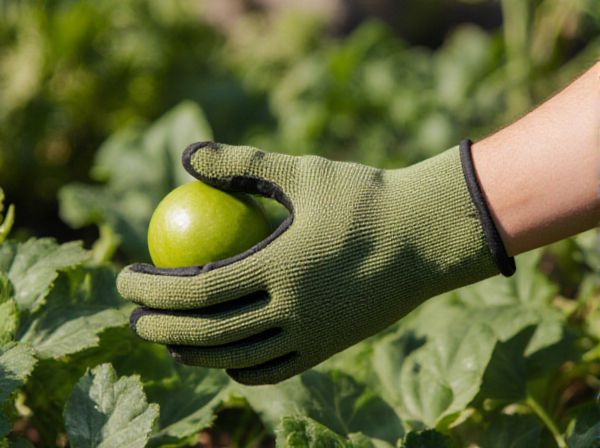
Green Harvest vs Field Ripening Illustration
Green harvest involves picking unripe grapes early to control yield and improve wine quality, preserving acidity and freshness. Field ripening allows grapes to mature fully on the vine, enhancing sugar levels and complex flavors but risking over-ripeness or adverse weather damage. Choosing between green harvest and field ripening depends on desired wine style, climate conditions, and vineyard management goals.
Table of Comparison
| Aspect | Green Harvest | Field Ripening |
|---|---|---|
| Definition | Harvesting crops before full maturity while still green | Allowing crops to fully mature and ripen naturally in the field |
| Harvest Time | Earlier, before full ripeness | Later, after full maturity |
| Quality | Higher moisture content, firmer texture | Optimal flavor and sugar development |
| Storage | Longer shelf life due to delayed ripening | Shorter shelf life, more perishable |
| Risk | Reduced risk of weather damage and pests | Higher risk of loss from weather or pests |
| Use Case | Best for processing and transport over long distances | Best for fresh market and immediate consumption |
| Example Crops | Bananas, tomatoes, green beans | Grapes, apples, coffee cherries |
Understanding Green Harvest and Field Ripening
Green harvest involves picking fruit or crops before they reach full maturity, preserving firmness and extending shelf life, which is ideal for long-distance transportation and early market availability. Field ripening allows produce to mature naturally on the plant, enhancing flavor development, sugar content, and nutritional value, though it may reduce shelf life. Understanding the differences between green harvest and field ripening helps optimize crop quality, storage logistics, and consumer satisfaction.
Key Differences Between Green Harvest and Field Ripening
Green harvest involves picking fruits or vegetables before they fully ripen on the plant, which helps in preserving firmness and reducing post-harvest losses, especially in crops like grapes and olives. Field ripening allows produce to mature naturally on the plant until optimal ripeness, enhancing flavor and sugar content, crucial for crops such as tomatoes and bananas. The key differences lie in timing, impact on nutritional quality, and suitability for storage and transportation.
Advantages of Harvesting Green vs Fully Ripe Produce
Harvesting green produce ensures extended shelf life and reduces post-harvest losses due to delayed spoilage, which is crucial for long-distance transportation. Green harvest also allows for earlier market availability, improving cash flow and better managing supply chain demands. Conversely, fully ripe produce offers superior flavor and nutritional content, but its perishable nature requires immediate consumption or faster distribution.
Impact on Flavor: Green Harvest vs Field Ripening
Green harvest preserves higher acidity and imparts a fresher, more vegetal flavor profile, maintaining a firm texture ideal for preserving vibrant taste notes. Field ripening allows full sugar development, enhancing sweetness and complexity while deepening aromatic intensity, resulting in richer, more robust flavors. The choice between green harvest and field ripening significantly influences the balance of acidity, sweetness, and flavor depth in the final product.
Nutritional Value: Which Method Wins?
Green harvest preserves higher levels of vitamins, antioxidants, and minerals by picking crops before full ripeness, preventing nutrient degradation often seen in field ripening. Field ripening allows natural sugar accumulation and flavor development but results in some loss of sensitive nutrients like vitamin C and folate. Nutritional analyses indicate green harvesting tends to retain superior overall nutrient density compared to traditional field-ripened produce.
Effects on Shelf Life and Storage
Green harvest involves picking fruits or vegetables before full ripeness, which significantly extends shelf life due to slower metabolic processes and reduced susceptibility to spoilage. Field ripening allows produce to mature naturally on the plant, enhancing flavor but shortening storage duration as fully ripened items are more prone to degradation and microbial attack. Storage conditions such as temperature and humidity must be carefully controlled for field-ripened crops to mitigate their accelerated perishability compared to green-harvested produce.
Best Crops for Green Harvest Techniques
Green harvest techniques excel with crops such as leafy greens, herbs, and vegetables like broccoli and peas, which maintain optimal flavor and nutritional value when picked before full maturity. This method reduces spoilage and extends shelf life by harvesting produce while still green and firm. Field ripening suits fruits like tomatoes and bananas, but crops for green harvest ensure higher market quality and fresher consumer experience.
Field Ripening: Pros and Cons
Field ripening allows crops to mature naturally on the plant, enhancing flavor and sugar content, which benefits fruits like tomatoes and grapes. However, this method increases exposure to pests, weather damage, and uneven ripening, leading to potential yield loss. While green harvest offers more control and uniformity, field ripening remains a preferred choice for maximizing quality in certain crops.
Choosing the Right Harvest Method for Your Garden
Choosing between green harvest and field ripening depends on crop type and desired quality. Green harvest ensures early picking for produce like peas and lettuce, maximizing freshness and reducing pest damage. Field ripening suits fruits such as tomatoes and grapes, allowing natural sugars to develop fully for optimal flavor.
Sustainable Practices in Green Harvest and Field Ripening
Green harvest methods reduce environmental impact by minimizing waste and preserving soil nutrients through early fruit picking, which enhances sustainability in agricultural cycles. Field ripening allows natural maturation on the plant, supporting biodiversity and reducing energy consumption associated with artificial ripening processes. Integrating both techniques with responsible resource management promotes long-term ecosystem health and sustainable crop production.
Green Harvest vs Field Ripening Infographic

 gardendif.com
gardendif.com